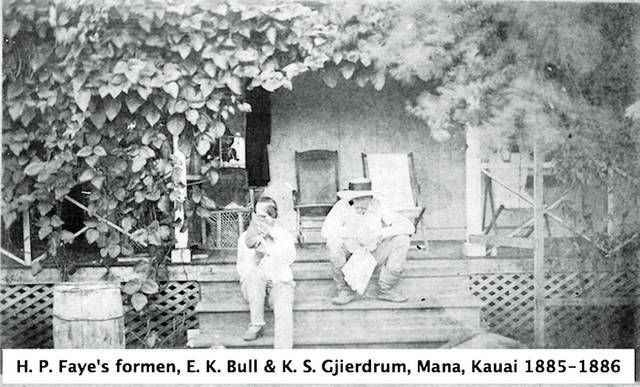Mana Camp, a now vanished but once thriving sugar plantation community, was located just off the Waimea side of Kaumualii Highway about midway between the Pacific Missile Range Facility on the west and Kamokala Ridge to the east. There are
Mana Camp, a now vanished but once thriving sugar plantation community, was located just off the Waimea side of Kaumualii Highway about midway between the Pacific Missile Range Facility on the west and Kamokala Ridge to the east.
There are recordings of a native Hawaiian village at Mana, and it is unclear when Mana Camp actually started as a plantation camp, but by 1886, there were at least several residences there, one being evidenced by sugar planter H.P. Faye’s foremen E.K. Bull and K.S. Gjierdrum’s home.
Kekaha Sugar Company expanded Mana Camp starting in 1898, and over many years, it was home to hundreds of immigrant sugar workers and generations of their families.
Yet, by the early 1950s, the population of Mana Camp had declined, as mechanization reduced the plantation’s work force.
A mainly elderly community remained, and its last two families, the Butacs and Pascuals, left for Kekaha in 1989, the year Mana Camp closed.
What buildings left standing were later razed or transported to Waimea for restoration and placement in Waimea Plantation Cottages.
H.P. Faye’s home, Kumuao, located below nearby Kawaloa Valley, was also moved to Waimea Plantation Cottages for its’ reception room and museum.
Then the entire camp area was leveled, so that today, virtually no evidence of Mana Camp exists.
And, by the way, Mana Camp’s neighboring camps — Camp 3, Pah On, Saki Mana and Polihale — are also long gone.
But in Mana Camp’s heydays, a railroad connected it with Kekaha, and three stores were open for business in the camp: Ah Ning, Muranaka and Mana Store.
Sixty-seven plantation houses also occupied the grounds of Mana Camp as well, as did a community hall, where movies were shown on Saturday nights.
What’s more, the camp had its own school, and a barber shop, restaurant, billiard hall, bath houses, a manager’s house, a stable, warehouse, Japanese language school, club house, tennis court, a playground, swimming pool, and a plantation office that provided the camp with its only telephone service and housed a health clinic and post office.


